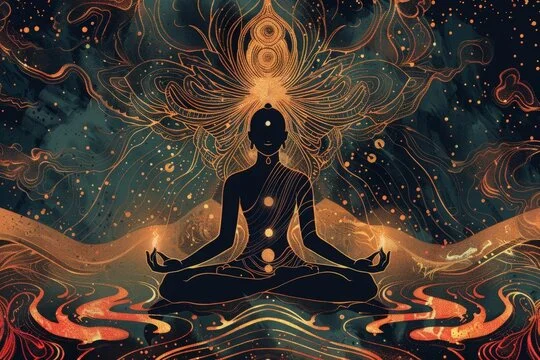Death is the ultimate destination for every human being, one we will all eventually reach, whether we want to think about it or not. For most of us, even imagining our death sparks fear: fear of losing relationships we gained, the wealth we built, and the memories we cherished. Yet every day, we take small steps toward this inevitable truth. But, is the death an end we fear or a new beginning?
And if it is new beginning, then what happens to us just after death and just before the new beginning. What we experience, what we feel and how everything starts again?
Death: An End or a Transition?
In many cultures, especially Hinduism, death is not considered the end. Instead, it is seen as a transition into a new life, determined by one’s past karma. Philosophers, scientists, and spiritual thinkers have for centuries thought about the big question: What really happens after death?
Modern studies have shown that the human brain displays heightened activity moments after clinical death. And this activity occurs for significant period of time after a person is declared dead. Some researchers even found that this activity resembles the patterns seen in a dream state, suggesting that our final moments might mirror the experience of dreaming. So, does it means, We start dreaming as soon as we die and what happens after dream ends?
The Connected Dreams Theory
Like many, I have often been curious about what a person experiences in their final seconds. My curiosity led me to a conclusion, what I call the Connected Dreams Theory.
A widely known belief is that just before death, a person experiences a flashback of their entire life within a few seconds. A small study even revealed that the brain remains highly active in areas connected with dreaming, similar to when we sleep.
Building on this idea, I imagine that as the brain begins to shut down, a person slips into a dreamlike state, experiencing visions much like those in ordinary sleep. But this time, instead of waking up in the same reality, the individual awakens in a parallel universe, through the very dream they were having in those final moments. In that universe, another version of the person continues to live, perceiving the death merely as a dream or perhaps forgetting it altogether.
In other words, consciousness never truly dies, it simply transitions, from one reality to another via dream that bridges 2 different realities together for very short duration of time.
It is possible that our dreams act as a bridge between different realities, offering small glimpses of the parallel lives we are living. Each night, our consciousness may wander through these alternate existences before returning to this one. But in that final sleep, when the brain can no longer sustain it, consciousness does not return, it simply moves on, leaving the body behind.
What are Parallel Universes
To understand the idea of a parallel universe, think of a pivotal choice we make everyday. For instance, I chose computer science in Class 11. But had I chosen commerce, arts, or biology, my life today would be very different.
According to the theory of parallel universes, every decision, however big or small, creates a new branch of reality. This means countless versions of us may exist simultaneously, each living out different choices we made.
Why Don’t We Remember Past Lives?
If consciousness transfers to another universe, why don’t we remember earlier lives? The answer may lie in where memory is stored. Memories are stored in the brain, not in the consciousness itself. When consciousness shifts, it takes on the memories of the new body and life, leaving the past inaccessible. That means, consiousness never truly knows when the past body died, it just moves to a new version of ourself via the dream that acts as a bridge, never to return.
Spiritual and Scientific Connections
The Bhagavad Gita describes the soul as eternal, stating: “Just as a person changes worn-out clothes, the soul discards the old body and takes on a new one.” In this theory, the soul equals consciousness, and it never dies.
This aligns with the law of conservation of energy, which states that energy can neither be created nor destroyed, only transformed. Consciousness, like energy, simply shifts form.
This idea also resonates with Hindu philosophy, which calls the world an illusion (maya) created by the divine. The ultimate goal is moksha, freedom from the cycle of life and death. Perhaps a soul that reaches moksha can control its consciousness at the final moment and escape this endless loop, or it is able to see all its realities from a third person view and has total control over it.
Final Thoughts
The Connected Dreams Theory may not be entirely new. In fact, it closely resembles the ideas of the Dream Theory and Quantum Immortality. Yet, what makes it fascinating is how it bridges science and spirituality, offering explanations that appeal to both believers and skeptics.
While we cannot yet prove or disprove what happens after death, exploring these ideas opens doors to deeper understanding. Perhaps death is not an end at all, but a dreamlike passage to another life, another universe, another version of ourselves.
